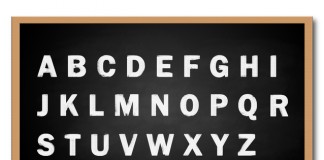R N Bhaskar
January 28, 2014
First, the good news. The government finally cleared a slew of projects worth Rs 1.5 lakh crore what had been gathering dust, possibly because it adopted a suitcase by suitcase approach towards clearances. There was also a ray of hope in the World Bank’s recent (Global Economic Prospect) forecast that India’s GDP growth could be around 6.2% for 2014, climbing to 6.6% and 7.1% in 2015 and 2016, respectively. The Supreme Court too delivered a brilliant judgement, severely curtailing the power of governments to take over the management of temple-trusts and their properties, including money.
But the bad news was bigger. Many of the “cleared” projects may not be able to take off for at least 6-12 months because of two reasons. First, land acquisition problems are likely to multiply – thanks to the new laws enacted by the government. The concerns are laudable – to protect small farmers and marginalised people of India. But in its populism, the lawmakers failed to create the required caveats which would allow for industrial growth – at least on lands that are lying fallow or on ‘forest’ lands that have no tree-cover at all. Second, NREGA will end up destroying agricultural labour and the food security could possibly distress small farmers.
Likewise, even though India faces the prospect of a bumper harvest, there will be little growth in storage. Expect more grain to rot. Not a pretty picture.
But it is the ugly side that is most worrisome. India has witnessed new practices that could derail the country.
Topping the list are banks that were asked to lend money to promoters without either proper scrutiny or adequate asset cover. They include public sector companies (like Air India’s purchase of 40 aircraft without a business plan), or private sector enterprises (Kingfisher is a good example).
Not surprisingly, bad debts have soared. Banks have had to make bigger provisions for such debts. Thus while the number of debt restructuring cases went up by just 53% during the past two years, total debt involved went up 80% (see table). Clearly, bigger ticket loans have now become sticky. Not surprisingly, 86% of bad debts are with nationalised banks.
| Stress at CDR window (amounts in Rs. Bn) | |||||||||
| Q3 2011 | Q4 2011 | Q1 2012 | Q2 2012 | Q3 2012 | Q4 2012 | Q1 2013 | Q2 2013 | Q3 2013 | |
| Toral cases referred for CDR | 341 | 365 | 392 | 433 | 466 | 491 | 522 | 549 | 580 |
| Total debt | 1,643 | 1,826 | 2,065 | 2,270 | 2,459 | 2,669 | 2,981 | 3,375 | 3,624 |
| Of which Cases rejected/closed | 48 | 53 | 59 | 63 | 75 | 79 | 88 | 92 | 96 |
| Debt involved | 166.98 | 175.71 | 208.17 | 213.77 | 274.16 | 318.42 | 370.45 | 390.45 | 452.6 |
| Cases under finalization | 34 | 36 | 41 | 61 | 64 | 50 | 33 | 42 | 53 |
| Debt involved | 264.46 | 225.25 | 351.61 | 371.72 | 311.18 | 230.65 | 320.83 | 481.87 | 448.3 |
| Cases approved | 259 | 276 | 292 | 309 | 327 | 362 | 401 | 415 | 431 |
| Debt involved | 1,212 | 1,425 | 1,505 | 1,685 | 1,874 | 2,120 | 2,290 | 2,503 | 2,723 |
| Source: CDR cell; Nirmal Bang’s report on CRD dated 15 Jan 2014 | |||||||||
| Note: Q1= Jan-Mar; Q2=Apr-Jun; Q3=Jul-Sep; Q4=ct-Dec | |||||||||
And while over 70% of the cases referred for debt restructuring have new packages approved for them, there is a growing lurking fear that many more will fall by the wayside, making the pile of bad debts climb higher. Eventually, taxpayers will be compelled to pay the price.
This will also give rise to some creative accounting – like the sale and lease back of some of the aircraft that Air India recently purchased. On paper there is money on the books, but the cuts will now bleed more profusely than before.
Another ugly issue is that nobody will be held accountable. Not the aviation minister. Not the officials in the prime minister’s office (PMO) under whose watch the aircraft purchase, the 2G telecom scam and the coal scam took place. In some states, legislators were allowed to run riot – consider how some of them beat up a policeman inside the assembly house and still retain their seats. Elsewhere, a governor protected another legislator from charges of corruption. And the brother of a votebank legislator got parole one more time. The list is endless. No wonder, Arvind Kejriwal, chief of the Aam Aadmi Party (AAP), has become a darling of the powerless masses, even though his methods are terrifyingly disruptive.
Will India be able to overcome the ugly future that confronts it? Yes, but only if there is more transparency and accountability on the one hand, and increased speed in the delivery of justice on the other.
For this India will need incorruptible, visionary and politically savvy administrators. Will 2014 throw up such a person?
Click here to read the original article.






































COMMENTS